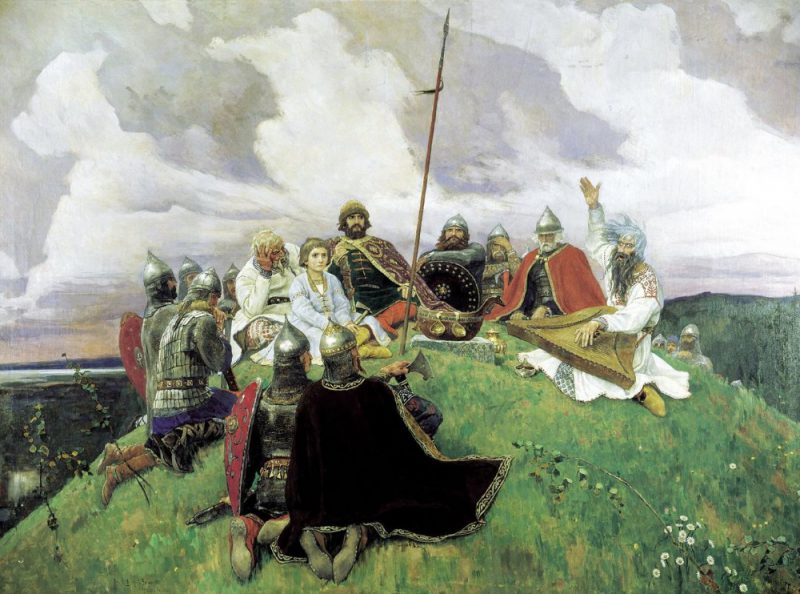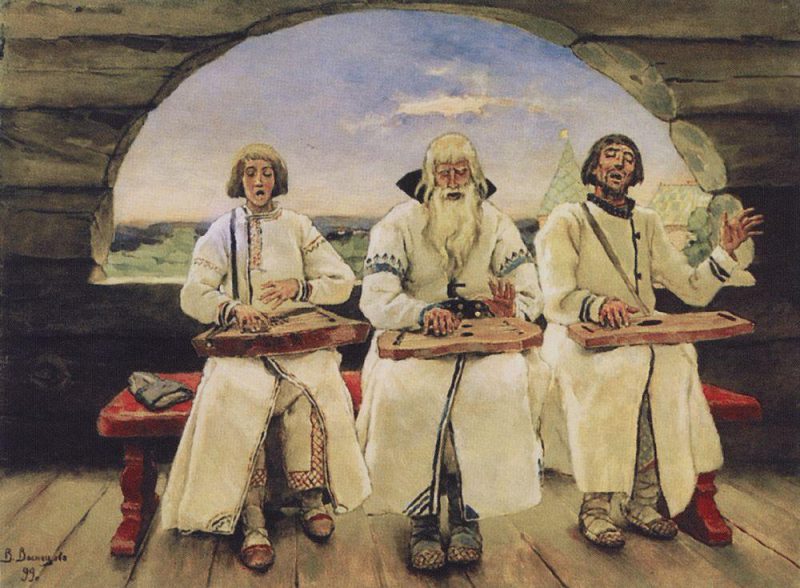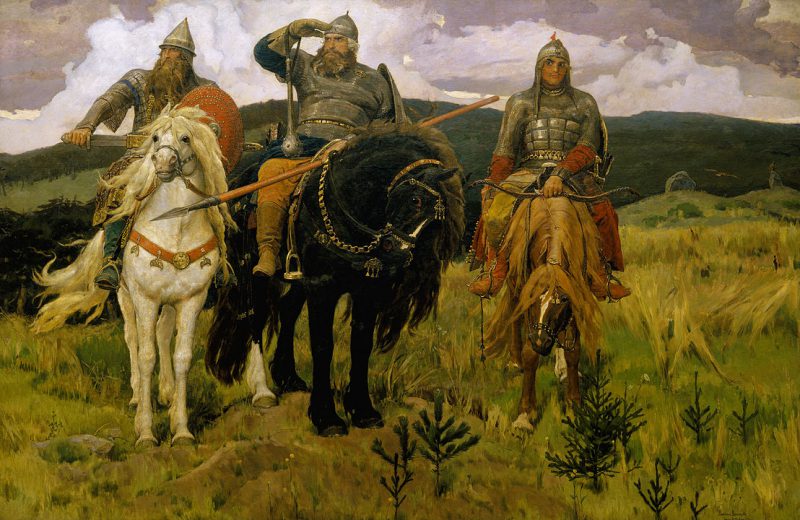Bylinas – Old Russian epic poems
You may have seen the picture of the great Russian artist Viktor Mikhailovich Vasnetsov “The Bogatyrs”, as well as a few references to the Russian bogatyrs in our articles. The bogatyrs are the heroes of epics Russian poems – bylinas – that describe the heroic events or remarkable episodes of the Russian history of the 11th — 16th centuries.

Our story today is about this old and interesting genre of the Russian folklore.
Bylina as a genre of folk art
The initial name of bylinas is starinas (стари́ны) that means “the old ones”. The term bylina (from the word быль – something that really happened) was introduced only in 1839 and is used until now.
Bylinas were originally created to be sung. In ancient times, they were performed to the accompaniment of gusli, but then this tradition became obsolete and they started being performed without any musical accompaniment.
Here is how a Russian folklore collector P.N. Rybnikov described his first encounter with performance of bylinas: “I laid down on a bag near a skinny fire (…) and being warmed up by the flame I fell asleep quietly; strange sounds woke me up: I had heard many songs and spiritual verses before, but I had never heard such a tune. Alive, bizarre and cheerful, sometimes it became faster, sometimes broke off and in its own way resembled something more ancient, forgotten by our generation.”

The poetic language of bylinas is solemnly melodious and rhythmically organized. Its artistic means – comparisons, metaphors, epithets – reproduce pictures and images epically sublime and grandiose, and when depicting enemies – scary and ugly. If a modern Russian speaker tries to listen to the original version of bylinas, at first he will find them difficult to understand due to the abundance of obsolete words, frequent repetitions, and the absence of the usual rhyme.
Like other works of folklore, bylinas do not have a fixed text. For centuries, they were passed by word of mouth from the old generation to the young one, and were not recorded until the 18th century. As a result, each bylina had an infinite number of versions.
For the first time Russian bylinas were published in 1804 based on the manuscript of Kirsha Danilov who is believed to have written it in the 1740s. The period of romanticism (first half of 19th century) created the interest of the intelligentsia in folk and national art. In the wake of this interest, in the 1830-1850s, the systematic collection of bylinas began and special scientific expeditions were organized for this purpose.
Classification of bylinas

Traditionally, all the bylinas are divided into two large cycles (periods): Kiev cycle and Novgorod cycle. The Kiev epic cycle includes a much larger number of characters and scenes than the Novgorod one. The events are confined to the capital city of Kiev and the court of Prince Vladimir. Interestingly, the epic image of prince Vladimir united memories of at least two great princes: Vladimir the Holy (d. 1015) and Vladimir Monomakh (1053–1125). The most famous Russian bogatyrs – Ilya Muromets, Dobrynya Nikitich, Alyosha Popovich – are traditional heroes of these bylinas. The Novgorod epic cycle includes more domestic and short plots about merchants, princes, peasants, guslars (for example, Sadko).
There is also a division into “senior” and “junior” bogatyrs. The “older” bogatyrs represent the remains of the pre-state epos of the times of the clan system and personify the ancient gods and the forces of nature – powerful and often destructive. When the time of these giants passed, the “younger” heroes came to life. Symbolically this is reflected in the epic “Ilya Muromets and Svyatogor”: an ancient warrior Svyatogor dies and Ilya, after having buried him, goes to serve Prince Vladimir.
Bylinas and historical reality
Most of the known today bylinas evolved in the era of Kievan Rus (9-11th centuries), and some of the bylinas go back to ancient pre-state times. At the same time, you can find echoes of events and everyday life of much later eras in the texts of bylinas. For example, Professor N.P. Andreev writes about the galoshes (appeared in 19th century) mentioned in one of the bylinas.
The epic world of Russian bylinas, following the oral historical memory and folk artistic thinking of storytellers, united people from different centuries and different eras. So, all the Kiev heroes became contemporaries of one prince Vladimir and lived in the heyday of Kievan Rus although they had to fight with enemies that plagued the Russian land from the 10th to the 16th centuries. The heroes of the bylinas that existed long before the reign of the prince Vladimir Svyatoslavich were drawn up to the same epoch as well.
There are many fictions and fabulous miracles in bylinas: the transformation of the characters, the revival of the dead, turning into animals. However, there are also many historically correct elements: description of ancient weapons of soldiers, references to real cities and historical figures. The bylinas reflected the historical living conditions of the Slavic people: the conquests of the Pechenegs and the Polovtsy against Russia, the devastation of villages, the plunder of wealth. Later, in the 13th and 14th centuries, Russia was under the yoke of the Mongol-Tatars which is also reflected in bylinas. During the years of national struggle, bylinas used to instill love for the motherland in the Russian people.
Bylinas at our times
Unfortunately, in our time, the epics have completely disappeared from living existence and are now only the magnificent cultural heritage of the bygone past. In Soviet times, there were attempts to adapt the epic genre to the conditions and requirements of modern times which gave birth to such phenomenon as novinas (нови́ны, new ones – as an opposition to starinas). But such a weird combination of the old form and the new actual content did not stick around for long and now is totally forgotten.
Today, Russian people usually learn about bylinas from numerous films and cartoons that repeat the epic plots but do not allow to hear the original performance. Nevertheless, thanks to some Russian folklore enthusiasts, we still have an opportunity to listen to some of the original bylinas accompanied by gusli.






